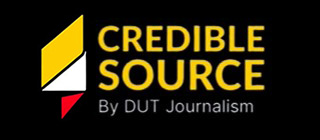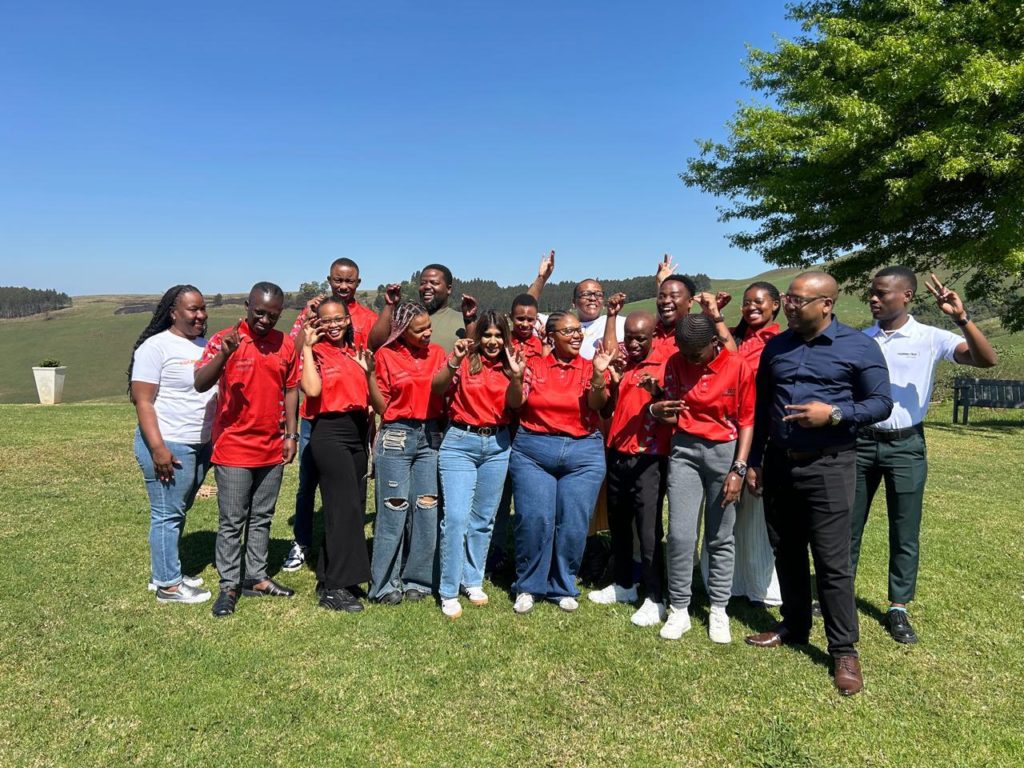By Musa Zondo and Amahle Amanzima Mazibuko
A group of 10 Bachelor of Journalism students from Durban University of Technology’s (DUT) City
Campus, met up on campus on Monday morning, eagerly waiting, anticipating what for some would
be their first ever drive to Pietermaritzburg. The trip, held in partnership with the KwaZulu-Natal
Tourism and Film Authority (KZNTAFA) , takes the students along the world renowned Freedom
Route Tour.
However, upon arrival at their first stop, which was Manaye Hall, were met with robust enthusiasm
by a crowd of students in the middle of a protest at one of the DUT campuses.
An Economic Freedom Fighters Youth Command (EFFYC) strike at the Indumiso Campus had
created an impactful delay, throwing a slight curveball to the students tight itinerary. Fortunately this
turn of events was in favour of the student journalists, who were able to capture the morning events,
conduct a few interviews here and there. However the young journo’s had to curb their enthusiasm
due to safety concerns and had to “abort mission” when their accompanying lecturer, Mr
Siphumelele Zondi cautioned them.
The active protest was a fitting start as it bridged past struggle with present day struggles and the
importance of storytelling.
Standing on the landmark spot where Nelson Mandela once rallied people while chanting what
would become one of South Africa’s monumental freedom slogans,- for the first time in history-
“Amandla, awethu! (power is in our hands!)”, gave the students an opportunity to be immersed in the
area’s rich history, an area that helped fan the flames of revolution.
Though, the next stop was in direct contrast, in that while the Manaye Hall stop was empowering,
and evoked a sense of pride, the Old Prison Project Gateway was a testament of institutional
oppression frozen in time. It vividly depicted the grim reality that freedom fighters and people who
defied the apartheid regime faced.
The students explored the oldest building in the prison yard, a guided tour of every room and
artefact, which painted a picture of the heinous prison conditions and the various methods of
punishment, from solitary confinement to even death penalty prisoners faced.
After a refreshing lunch, the journey saw the students arriving at the Nelson Mandela Capture Site
near Howick,where the world-renowned metal sculpture of the struggle icon, whose face can only be
seen from a specific angle. A walk around the museum which featured artefacts and replicas from
Nelson Mandela’s gun to the car he was captured travelling in, and a light foot race, shortening the
path to the museum fondly known as the “The long walk to freedom”, which leads tourists to the awe
inspiring sculpture.
The first day of the tour concluded with a check-in at the Mt Shekinah Hotel, followed by an
emotional yet powerful historic documentary film, that detailed how the African National Congress
sought out help from allies in countries like the United Kingdom and the United States of America,
Day two was more settled in nature, starting off with a scrumptious breakfast, and a tourism
awareness session, which largely moved away from the exploration of the past but straight into how
best these historic gems should be told.
A moment of reflection from the previous day’s event was facilitated by Mr Siphumelele Zondi.
Thereafter Ms Pinky Radebe from the KZNTAFA set a compelling tone emphasising the need for
practical experience.
“You need to work and be experienced despite being academics,” she said. In an attempt to get the
students to challenge simplified historical narratives that tend to omit certain important figures, she
added a thought provoking point worth highlighting.
“I appreciate the help of white people from other countries in the fight against apartheid, but we need
to dig deeper, there were also Indians and coloureds,” she explained.
The engagement session then brought the future of news into the room. Ayanda Mdluli, an editor at
The Daily News, introduced the students to RON, an AI newsroom assistant. This demonstration
alerted the students to the evolving tools of the trade, showing how technology could aid or invade
the editing processes.
Students had the chance to also engage with Ukhozi FM station manager, Lwazi Mkhabela, to whom
they directed queries about the difficulties of getting into news rooms, whether it is for shadow
positions or internships.
Mr Mkhabela advised the students to never stop trying, because it is unrealistic to expect to be
accepted on the first attempt, especially when it comes to big companies like the public broadcaster
– SABC.
Nkanyiso Mchunu, an Honours journalism student, likened the job application process to a
relationship, using an analogy.
“The most difficult point in a relationship is not knowing whether to hold on or bear the pain and it is
the same thing as not getting a response after reaching out to a journalist or editor,” he said.
The tour ended with a group picture on the lawns of the Mt Shekinah Hotel, with the picturesque background as a backdrop.


